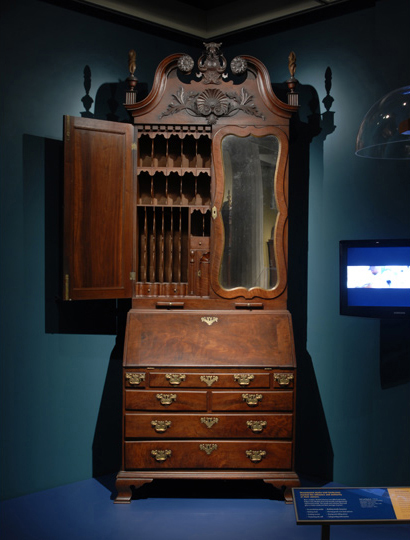
Their complex, divided interiors were filled with books, ledgers and valuables that both literally and figuratively represented wealth. The rituals and activities that took place at desks reinforced their message of power:
• Accumulating wealth
• Making deals
• Trading secrets
• Promoting the self
• Building family dynasties
• Moving goods over land and sea
• Buying and selling slaves
• Safeguarding information
Artist Statement
At first glance, the desk-and-bookcase alerts us to the decadent new wealth that moved throughout the North and South as a result of the slave trade. But if you look closer, deeper and more troubling stories begin to be revealed. Stories of people bound by time and circumstance, of people bound by the deeds of sale and ownership documents within. My desire is to undress this familiar furniture form and expose its absurdity and complexity, its unbelievably real and dangerous power. I believe that the desk-and-bookcase wielded immense power over every member of the plantation landscape—black and white, rich and poor, male and female.
Theaster Gates is a performing and visual artist from Chicago whose work moves between performance, presentation and radical everyday activities to tackle issues of race, religion, and identity. He teaches at the University of Chicago in the Department of Visual Art.
Theaster Gates
Omega and the Desk That Binds
(A Colored View), 2008
Digital Film Project
Poem written and read by Orron Kenyetta